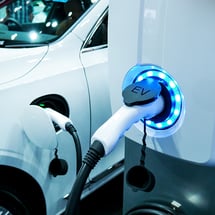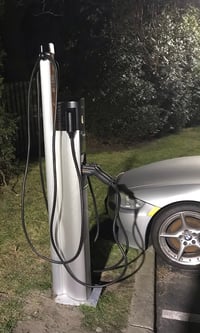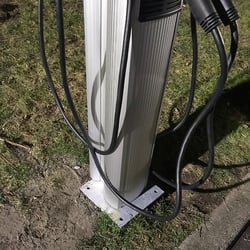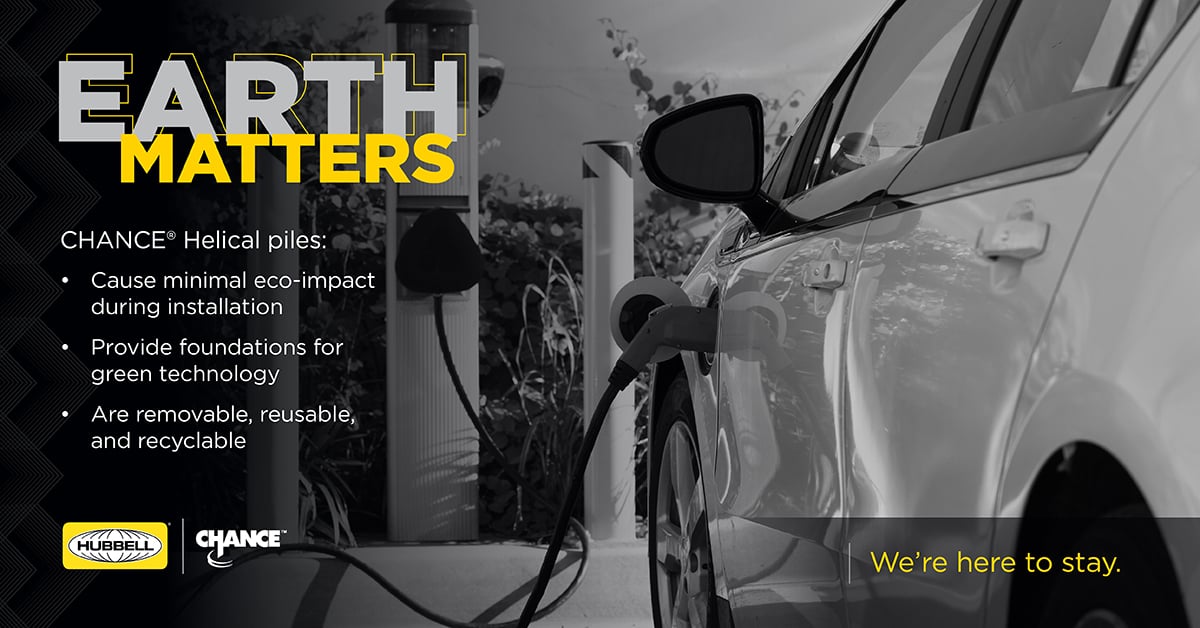 Whether you’re for them or against them, electric vehicles (EVs) have been a hot topic in recent news. In addition to reducing local pollution and increasing energy efficiency, EVs offer an opportunity to replace fossil fuels in the transportation sector. These benefits also come with various challenges, but to cite a 2021 report by the National Renewable Energy Laboratory (NREL), it’s clear that the future of personal vehicular transportation is electronic.
Whether you’re for them or against them, electric vehicles (EVs) have been a hot topic in recent news. In addition to reducing local pollution and increasing energy efficiency, EVs offer an opportunity to replace fossil fuels in the transportation sector. These benefits also come with various challenges, but to cite a 2021 report by the National Renewable Energy Laboratory (NREL), it’s clear that the future of personal vehicular transportation is electronic.
National Charging Network
The Joseph R. Biden administration has established a goal of building a national public charging network of 500,000 electronic vehicle supply equipment (EVSE) ports by 2030. To meet this goal by 2030, approximately 12,048 public EVSE port installations will be required each quarter for the next 9 years, requiring a significant increase from the 5,077 public EVSE ports that have been installed each quarter, on average, since the start of 2020.

Infrastructure Demand
 NREL’s 2017 National Plug-In Electric Vehicle Infrastructure Analysis estimated that 27,500 DC fast and 601,000 Level 2 public and workplace EVSE ports would be required in the United States to support a scenario in which 15 million light-duty EVs are on the road by 2030 (Wood et al. 2017). Based on this analysis, 79.0% and 16.8% of the required DC fast and Level 2 EVSE ports, respectively, have been installed as of 2021. While those percentages may seem like good progress has been made, that still leaves the United States over 5,700 DC fast and 500,000 Level 2 public and workplace EVSE ports short of meeting the demand.
NREL’s 2017 National Plug-In Electric Vehicle Infrastructure Analysis estimated that 27,500 DC fast and 601,000 Level 2 public and workplace EVSE ports would be required in the United States to support a scenario in which 15 million light-duty EVs are on the road by 2030 (Wood et al. 2017). Based on this analysis, 79.0% and 16.8% of the required DC fast and Level 2 EVSE ports, respectively, have been installed as of 2021. While those percentages may seem like good progress has been made, that still leaves the United States over 5,700 DC fast and 500,000 Level 2 public and workplace EVSE ports short of meeting the demand.
Atlas Public Policy’s 2021 U.S. Passenger Vehicle Electrification Infrastructure Assessment estimated that an additional 252,000 DC fast and 244,000 Level 2 public and workplace EVSE ports beyond today’s installations would be required by 2030 to support a scenario in which 100% of passenger vehicle sales are electric by 2035 (McKenzie and Nigro 2021). Based on this assessment, the number of DC fast and Level 2 EVSE ports is 8.1% and 30.2%, respectively, of the way toward meeting 2030 infrastructure requirements.
Government Support
Perhaps the most significant development for EV charging infrastructure was the signing into law of the Bipartisan Infrastructure Law (BIL) on November 15, 2021. The BIL includes $7.5 billion for EV charging infrastructure. The infrastructure installed as a result of this funding is intended to build a national network of EV charging stations to support long-distance EV travel and encourage EV adoption.
Ready for Action
 Appropriately positioned as a global leader in the power systems and civil construction industry, Hubbell Power Systems is prepared to support the growth of the EV charging infrastructure on multiple levels. One way Hubbell is supporting the EV charging industry is by providing pre-engineered and sustainable CHANCE Foundation Solutions for the charging stations. CHANCE® Instant Foundation® systems are currently designed, tested, and proven in applications for DOTs, utilities, area lighting, architecture, and now EV charging stations. This system excels in the special construction and design circumstances presented by these applications and are listed in standards and specifications for numerous public and private sector entities.
Appropriately positioned as a global leader in the power systems and civil construction industry, Hubbell Power Systems is prepared to support the growth of the EV charging infrastructure on multiple levels. One way Hubbell is supporting the EV charging industry is by providing pre-engineered and sustainable CHANCE Foundation Solutions for the charging stations. CHANCE® Instant Foundation® systems are currently designed, tested, and proven in applications for DOTs, utilities, area lighting, architecture, and now EV charging stations. This system excels in the special construction and design circumstances presented by these applications and are listed in standards and specifications for numerous public and private sector entities.

Not only are the CHANCE Instant Foundations removable and reusable after installation, but they can be immediately loaded once installation is complete, resulting in higher productivity rates per crew and reduced installation costs. These foundations are a green and carbon friendly soil displacement system that requires no drilled holes, concrete, or removal of spoils. The steel foundations themselves are relatively light weight which reduces shipping costs and allows the use of smaller installation equipment, typically a skid steer loader or small excavator. The higher allowable bending moment combined with axial tension and compression capacity makes the CHANCE Instant Foundation system a perfect solution to support the growing EV infrastructure.
If you’re thinking about installing EV charging stations at your site, or perhaps you already have, it’s important to protect your investment with either concrete bollards or bumper posts. This added measure of protection can help eliminate accidental damage from common vehicular traffic, lawn maintenance, or even snow removal equipment. In addition to the charging station foundations, CHANCE offers a full line of bollard foundations and bumper posts.
Are you installing or thinking about installing EV charging stations on your next project? Are you tired of paying for or relying on that concrete truck to show up on time? Allow our CHANCE Engineering Team to provide an instant foundation design recommendation for you that will save you both time and money.
Contact us to learn more or receive a quote.
Brown, Abby, Alexis Schayowitz, and Emily White. 2022. Electric Vehicle Charging Infrastructure Trends from the Alternative Fueling Station Locator: Fourth Quarter 2021. Golden, CO: National Renewable Energy Laboratory. NREL/TP-5400-82298.
Wood, Eric, Clément Rames, Matteo Muratori, Sesha Raghavan, and Marc Melaina. 2017. National Plug-In Electric Vehicle Infrastructure Analysis. Washington, D.C.: U.S. Department of Energy Office of Energy Efficiency & Renewable Energy. DOE/GO-102017-5040.
McKenzie, Lucy and Nick Nigro. 2021. U.S. Passenger Vehicle Electrification Infrastructure Assessment. Washington, D.C.: Atlas Public Policy, April 28, 2021.

